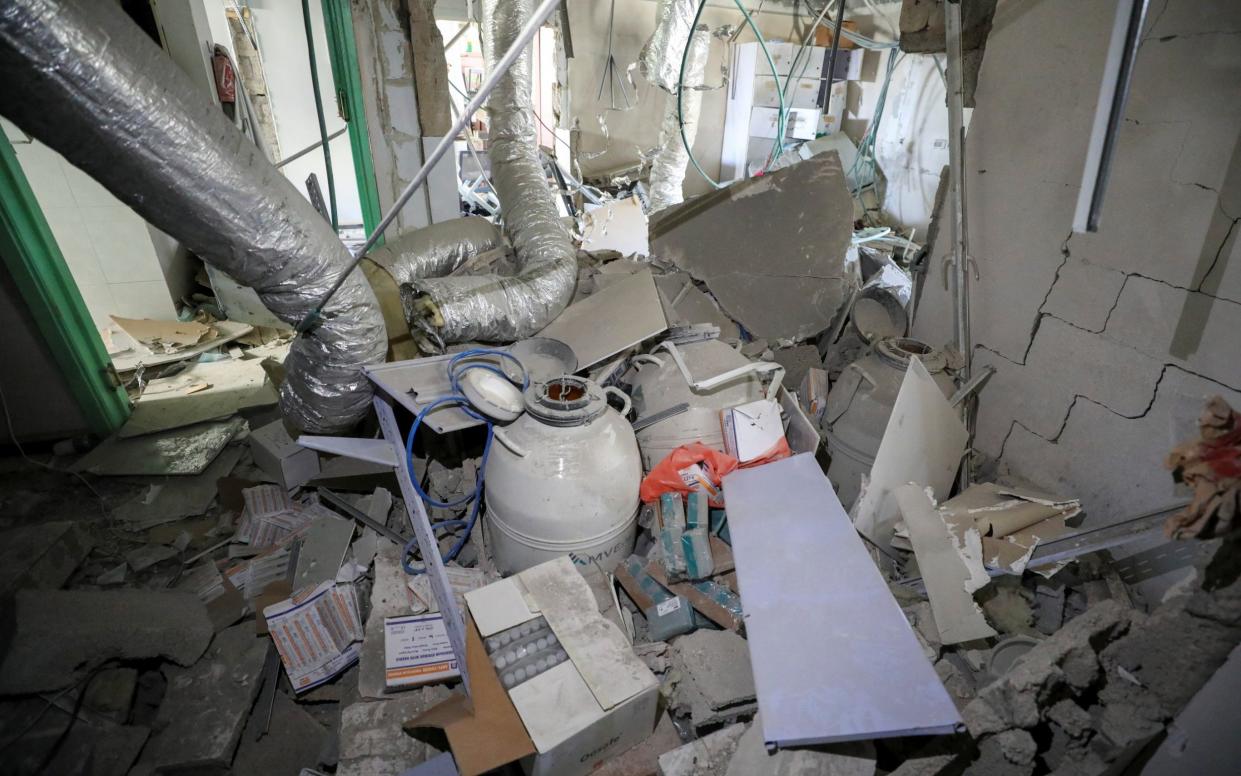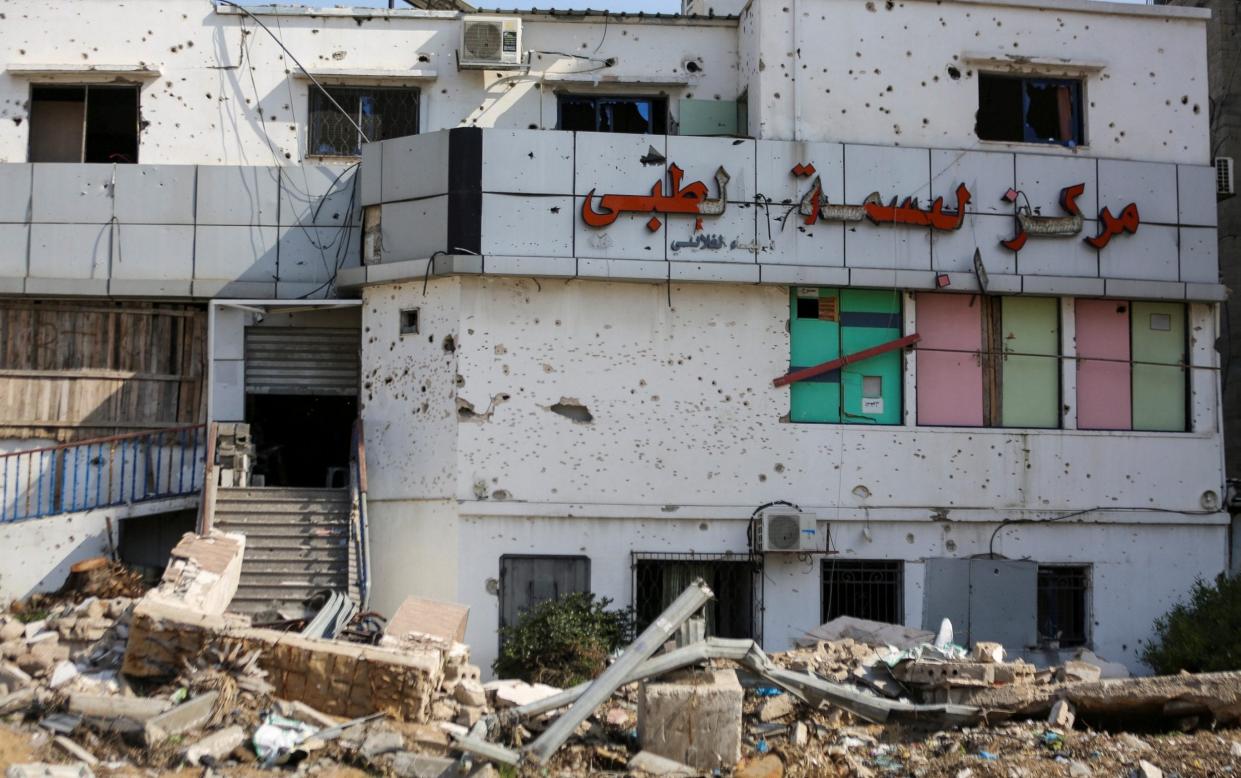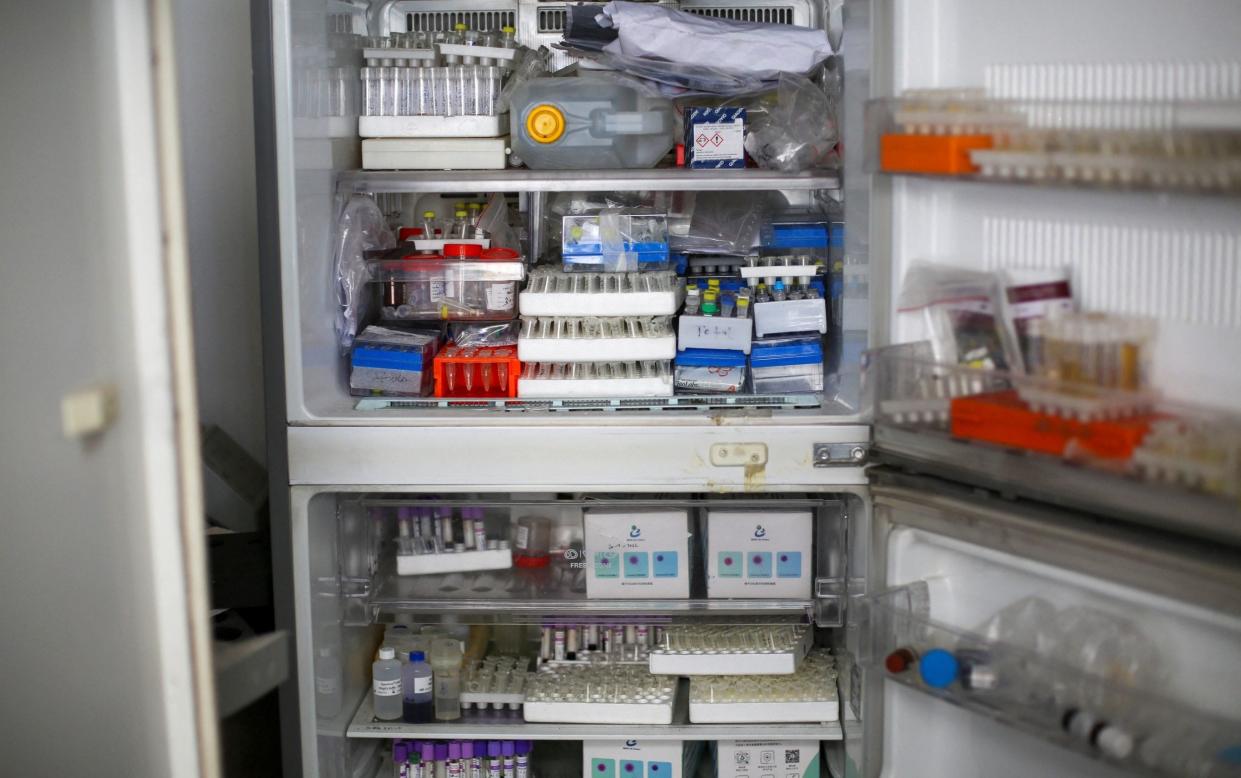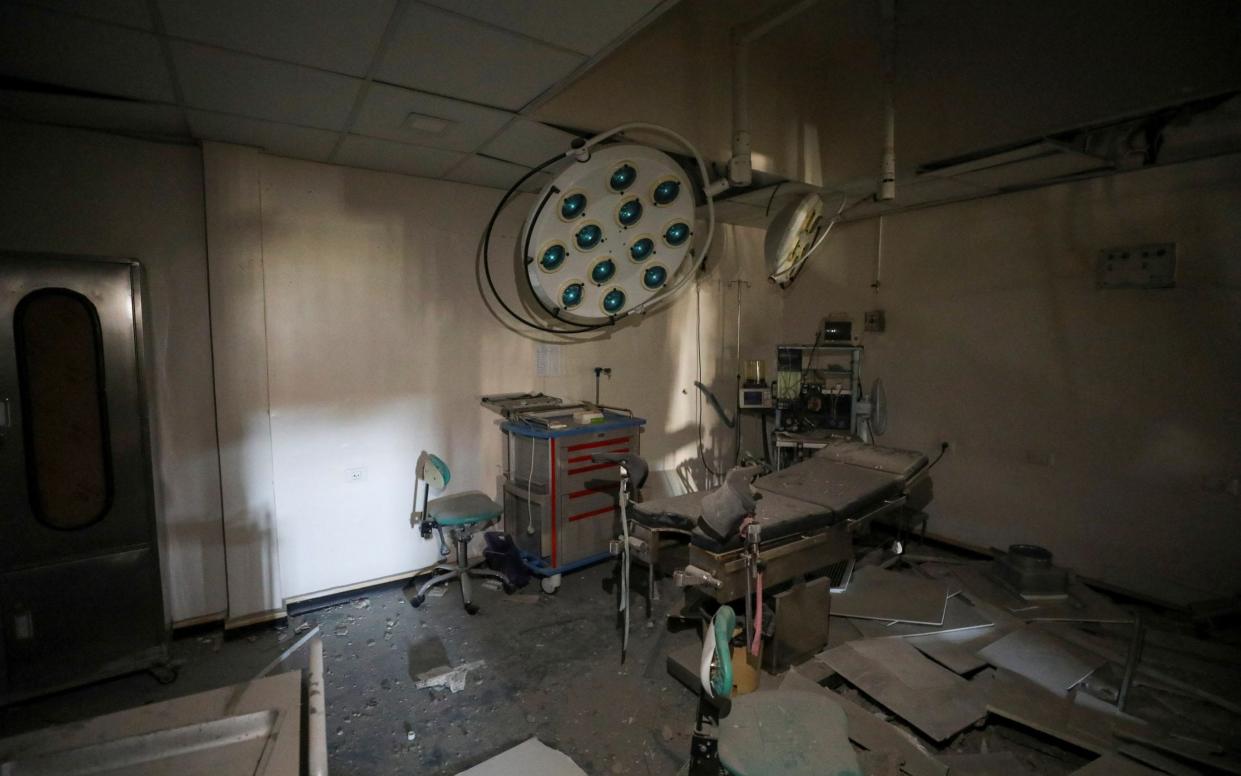Majority of Gaza’s frozen embryos destroyed in Israeli strike

An Israeli strike on Gaza’s largest fertility clinic destroyed all of its frozen embryos and unfertilized eggs, leaving hundreds of infertile couples unable to ever have children.
The Al Basma IVF centre, in Gaza City, is where most of the territory’s frozen embryos and other specimens are stored when couples go through IVF.
The strike on the clinic, which happened in December, blasted the lids off five liquid nitrogen tanks stored in a corner of the embryology unit.
As the liquid evaporated, the temperature inside the tanks rose, destroying more than 4,000 embryos plus 1,000 more specimens of sperm and unfertilized eggs.
The embryos in those tanks were the last hope for hundreds of Palestinian couples facing infertility, doctors have said.
According to a Reuters-commissioned journalist who visited the site this month, the embryology lab is still strewn with broken masonry, blown-up lab supplies and, amid the rubble, the liquid nitrogen tanks.
The lids were open and, still visible at the bottom of one of the tanks, a basket was filled with tiny colour-coded straws containing the ruined microscopic embryos.

Bahaeldeen Ghalayini, the obstetrician and gynaecologist who founded the clinic, said: “We know deeply what these 5,000 lives, or potential lives, meant for the parents, either for the future or for the past.”
At least half the couples – those who can no longer produce sperm or eggs to make viable embryos – will not have another chance to get pregnant, he said, adding: “My heart is divided into a million pieces.”
Seba Jaafarawi is one of those who used the centre. Ms Jaafarawi and her husband could not get pregnant naturally and turned to in vitro fertilisation (IVF), in which eggs are collected from a woman’s ovaries and fertilised by sperm in a lab.
The fertilised eggs, called embryos, are often frozen until the optimal time for transfer to a woman’s uterus.
Despite Gaza’s poverty, couples facing infertility often pursue IVF, some selling TVs and jewellery to pay the fees, Mr Al Ghalayini said. At least nine clinics in the enclave performed IVF, with most frozen embryos stored at the Al Basma centre.

Three years of fertility treatment was a psychological roller coaster for Ms Jaafarawi. The retrieval of eggs from her ovaries was painful, the hormone injections had strong side-effects and the sadness when two attempted pregnancies failed seemed unbearable.
In September last year, Ms Jaafarawi finally became pregnant – her first successful IVF attempt. “I did not even have time to celebrate the news,” she said.
Two days before her first scheduled ultrasound scan, Hamas launched its Oct 7 attack on Israel, killing 1,200 people and taking 253 hostages.
In response, Israel launched an all-out assault to destroy Hamas that has since killed more than 33,000 Palestinians, according to Gaza’s health authorities.
Ms Jaafarawi’s ultrasound never happened. Mr Al Ghalayini closed his clinic, where five of Ms Jaafarawi’s embryos were stored.

She knew she should rest to keep her fragile pregnancy safe, but hazards were everywhere. She climbed six flights of stairs to her apartment because the lift stopped working. A bomb destroyed the building next door and blasted out windows in her flat, and food and water became scarce.
Instead of resting, she worried. “I got very scared,” she said. She and her husband eventually crossed into Egypt on Nov 12. Ms Jaafarawi had her first ultrasound in Cairo, which showed she was pregnant with twins and they were alive.
But after a few days, she experienced painful cramps, bleeding and a sudden shift in her belly. She made it to hospital, but the miscarriage had already begun.
“The sounds of me screaming and crying at the hospital are still in my ears,” she said. “Whatever you imagine or I tell you about how hard the IVF journey is, only those who have gone through it know what it’s really like.”
Ms Jaafarawi wanted to return to Gaza, retrieve her frozen embryos and attempt IVF again. But it was too late.
Mr Al Ghalayini said a single Israeli shell struck the corner of the centre, blowing up the ground floor embryology lab. He does not know whether the attack specifically targeted the lab or not.
“All these lives were killed or taken away,” he said. “Five thousand lives in one shell.”

